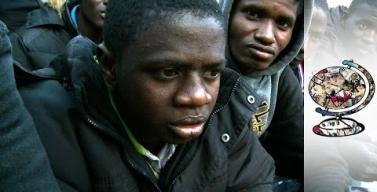For African migrants Libya used to be a Mecca: a place to find work or get access to Europe. But now the workers who come here are trapped in the political, economic and social chaos engulfing the...
SHAMANISM: TRIBUTARIES OF THE BAIKAL
Preview of Stonedog's on-going film about Shamanism, which was inspired by Director Dasha Redkina's stay with a Siberian Shaman a few years ago. This film features, among others, an authoritative interview with Professor Keith Howard of the School of Oriental and African Studies, London (SOAS), who establishes Siberia as the root of Shamanism, and illuminates its extraordinary tracks across the globe. He also defines and dissects this ancient metaphysical practice, astutely establishes why it is a religion, and pinpoints its influences on the major religions. A leading expert in Shamanism, Prof. Howard offers deep insight into the survival of this religion, during and after the crushing Soviet years, its elastic adaptations, and its future prospects vis-a-via an ever-changing, material world and the pressures of tourism.
This film promises to be the most profound, objective survey of Shamanism every made.
*The train footage running through this promo was shot by Dasha Redkina during her first visit to Lake Baikal.
Produced by Ishmael Annobil
Directed by Dasha Redkina
Art Direction by Marisa Rinaldi
Filmed and Edited by Fionn McSherry and Ishmael Annobil
Sound by Marco Iavarone & Nikos Nikolalaios
Executive Producer: Stonedog Productions
NB: Images used in this promo are for illustrative purposes only and are not necessarily owned or claimed as owned by Stonedog Productions. This is an on-going project.
Related Podcasts
|
By Journeyman Pictures |
If you've enjoyed watching our films of Daniel Barenboim playing Chopin at Tate Modern, this is now your chance to see all five performances together. What's more, we've also added extra unseen... |
|
On a market day in the Bwa village of Boni, in central Burkina Faso, West Africa a group of masks perform, including the great plank masks called 'nwantantay', the leper, hyena, dwarf, antelope,... |



